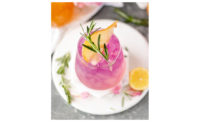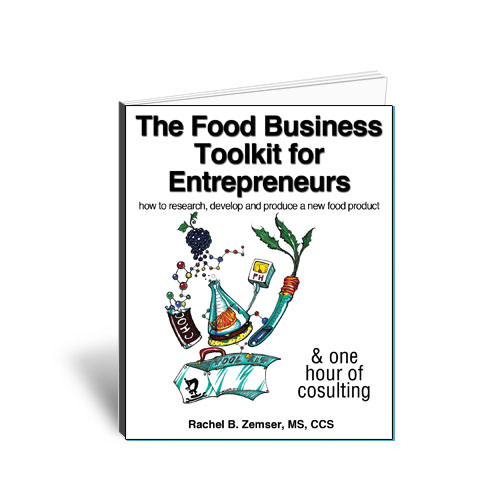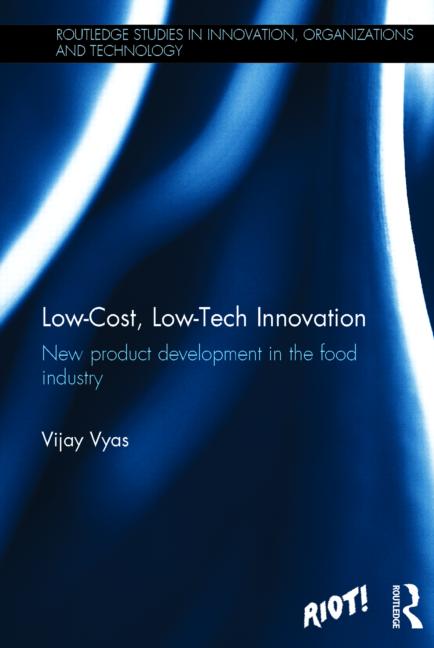Innovative Beverages Find Success
Touting creative flavors and interesting nutrients, colorful new beverages show growth in niche markets.










Over the past five years, from 2005-2010, on a global basis, the nominal value of both soft drinks and hot drinks in retail grew at about the same rate--a compound annual growth rate of 7% for soft drinks and 8% for hot drinks. However, since soft drinks generate more value than hot drinks, over this same timeframe, soft drinks’ value grew by $130 billion, while hot drinks grew by about one quarter this amount.
The soft drinks category is dominated by the two global giants, the Coca-Cola Company, with a 26% share of global retail value in 2010; and PepsiCo Inc., with a 12% share. The next closest company, Nestle, has about one quarter the share of PepsiCo. Because of the profitability of soft drinks, there are a large number of smaller competitors looking to be innovative to capture a small, but profitable, business. Despite the innovations of the global giants, combined, they have lost over 1 percentage point in global value share over the past five years.
The hot drinks competitive situation paints a very different picture from soft drinks. The top four competitors are Nestle SA, Kraft Foods Inc., Unilever Group and Sara Lee Corp. The combined retail value shares in 2010 of these top four hot drinks companies was about 31%. This combined share is unchanged over the past five years.
While the hot drinks segment is a highly competitive market, it is not quite as dynamic as soft drinks. Globally, there is much new product activity in both soft and hot drinks. Soft drinks, however, tend to see more innovative ideas than hot drinks.
Soft Drinks Innovations--Creative Health and Wellness
The emphasis on health and wellness still drives most new product development in soft drinks. Consumers around the world still respond to messages of healthier diets and lifestyles through beverages, and this can be used to launch unfamiliar drinks into new markets and to justify higher prices.
New and innovative combinations of ingredients in new products directed at new consumer groups and usage occasions are some of the chief methods to communicate unique health benefits. Bottled water and juices are becoming delivery systems for beauty-focused functional ingredients, such as aloe and collagen for youthful skin, and other ingredients for weight management, in an attempt to reach female consumers. Vitamin-enriched waters and RTD teas join juices in trying to establish usage occasions and product benefits that are attractive to mothers and children, especially in countries throughout Latin America, the Middle East and Africa, where the younger demographic is disproportionately large. Many companies are pursuing strategies of bringing successful ingredients and flavors from one soft drinks category into another, but a more targeted approach to category and geography is needed to achieve trust among consumers.
Functionality in food and beverages is a well-established concept through much of Asia Pacific, helped in no small part by regulatory agencies that have a more streamlined and permissive process for ingredients approval than their counterparts in Western Europe and North America.
Products designed for general well-being, such as digestive and cardiovascular health, are now very ubiquitous; it can be difficult for new products to have an impact. Finding unique health claims and untapped segments of the population to target is key. The female population growth in the region is expected to slightly outpace total population growth over 2010-2014, and soft drinks targeting this segment are among the fastest growing.
Unique formulas for beauty, taking elements such as collagen, aloe and vitamin E–already familiar to consumers of skin care products–are appearing with greater frequency in waters, juices and teas, in an attempt to reach the female consumer. These can also be combined with protein and fiber content for weight management, but manufacturers must be careful not to confuse consumers with unclear health claims or price themselves out of serious consideration in each category.
Fiber and Protein for Satiety; Aloe for Youth
Alo Youth was launched in October 2009 in the Philippines, by RFM Corp., as the first local brand of other Asian specialty drinks that provide functional benefits for the skin. Alo Youth is made from aloe vera juice and contains fragments of natural aloe vera, which helps regulate blood circulation and repair damaged tissues; 500mg of collagen, which enables the skin to be more elastic; vitamin E, a powerful antioxidant; and 200mg of L-carnitine, which assists in weight management.
The brand is very clearly positioned as a delivery system for beauty and skincare benefits. Both the brand name and packaging connote youthful skin.
Drinks have crossed over from meal replacement to refreshment and are becoming part of everyday diets. These drinks are often dairy- or protein-based, and added fiber can contribute to satiety, a concept that has room to develop in most Western markets.
As whey protein solubility continues to develop, a wave of new products moving beyond a dairy base, to water and juice, is expected in many major markets. Drinks for satiety remain one of the few new concepts yet to be explored in most developed markets; as major categories continue to be saturated with brands--juice, tea and even carbonates--those that are both low calorie and can serve as a meal replacement could find success.
The consumer product Whole Water, from Fonterra Brands Ltd., New Zealand, is a low-calorie water with ingredients to promote satiation and “Help bridge the hunger gap.”
Adding Fruit Pulp Builds a Healthy Image
In most drinking cultures around the globe, health and quality perceptions in fruit/vegetable juice are driven primarily by juice content and, secondarily, by sugar content. For this reason, the highest quality, most healthful juices tend to be perceived as 100% juices. However, this is not universally true. Juice drinks only have up to 24% juice, but they can still be perceived to be health-oriented products, based on a lower sugar content and the inclusion of other healthful additives.
Minute Maid Pulpy was launched with a tagline: “Taste and feel fresh like drinking fresh orange juice.” Minute Maid Pulpy has 20% orange juice, with 3% orange pulp, as well as calcium and vitamins added. This is the first economy orange juice drink that features the addition of pulp in its contents. [Editor’s note: In February, 2011, the Coca-Cola Company announced that Minute Maid Pulpy had joined the list of brands achieving global retail sales of more than $1 billion. Launched nationally in China in 2005, it reached the $1 billion mark in only five years.]
New flavors from a hugely successful brand that complement the existing flavors can keep a brand’s image fresh in consumers’ minds. Minute Maid Pulpy Tropical is a blend of popular, mixed fruit flavors.
Hot Drinks Innovations: Health and Wellness
Some motivating strategies behind new product development in hot drinks are health and wellness; a more convenient format or delivery system; and novel ingredients added to a familiar tea or coffee product. Launching or restaging brands could be a way to help a stagnant category appeal to a promising new demographic, but this also carries a higher risk. Many successful innovations instead offer a smaller ingredient- or packaging-based improvement.
Both coffee and tea have natural, healthy antioxidant properties, among others, which manufacturers continue to highlight. Increasingly, however, both coffee and tea products have begun to use added functional ingredients that provide benefits beyond naturally existing elements. Products for energy, beauty and immune system health have already appeared in soft drinks and food categories and could also do well in hot drinks. The key seems to be not to differ too much from existing products, at the risk of alienating consumers.
Functionality is typically tied to a particular need during a particular usage occasion: power for morning alertness or study; fiber for digestion after meals; and slimming for dieting. In this way, the consumer is encouraged to drink coffee or tea as a delivery system for benefits--during times they might not normally be drinking hot drinks.
The price of the product could be an issue. Premium, but non-functional, coffees and teas already are prevalent and preferred by consumers, so functional lines at a higher price point may have trouble gaining sustained attention. A clear message of efficacy and value-for-money is key.
San Miguel Coffee Pro-Health, from San Miguel Coffee Super Mix Co. in the Philippines, is an example of a coffee product with added functional ingredients. It is available in Pro-Beauty, Pro-Fiber, Pro-Power and Pro-Slim variants and sells at a 15% unit price premium compared to Nescafe, the leading brand of instant coffee (with an 86% value share in 2010).
This is an instant coffee brand which offers added value through nutritional benefits: Pro-Beauty is fortified with collagen for good skin; Pro-Power is enhanced with ginkgo biloba to provide mental and physical focus; Pro-Fiber has added inulin for good digestion; and Pro-Slim has L-carnitine for weight loss.
San Miguel coffee’s diverse variants allow it to capture a wide clientele base with different health needs. The company is poised to take advantage of the emerging holistic view of health and beauty, through its emphasis of linking nutrients to physique. However, it needs to raise consumer awareness through product advertising, in order to communicate the value of its benefits and compete successfully against Nescafé.
Rise of Single-serve in Western Europe
Single-serve formats are becoming more popular in Western Europe, as illustrated by sales of flexible plastic packaging (plastic sachets). Over the period 2004-2009, there was 24% volume growth for tea and even greater 33% growth for coffee. Coffee single-serve sachets are also outselling tea single-serve by nearly two-to-one, indicating an area ripe for consumer adoption of new products. The convenience offered by single-serve sachets is appealing to more and more consumers in Western Europe, especially a younger generation not tied to traditions. Tea remains an underdeveloped segment for single-serve.
Royal T-stick, from Royal T-stick Europe BV, is a new tea launched in the Netherlands in 2009. It is uniquely packaged in a “stick,” instead of a bag. This brand, in particular, offers several fruit flavors as well, in an attempt to create a new brand line that can stand in contrast to existing tea brands and formats. The launch of a new brand and format is an attempt to attract new consumers to the tea category--those who might otherwise avoid tea as “too time-consuming” to brew.
Novel Ingredients–Opportunity and Risk
Nestlé Foaming Milk Green Tea, in China, is an extension of Nestle Milk Teas that has the distinct character of foam on the surface and both fruit flavor and green tea flavor. The product tried to recreate the popular local café experience of milk teas in an instant format that could be made at home.
Some of the elements that worked in favor of this launch were a well-trusted brand name and the distinctly local flavor tradition of milk teas, especially popular in cafés. But, the combination of green tea, fruit and foam ultimately hit the wrong note. The product was too exotic and too different from that which consumers were accustomed. Consumers failed to accept the strange taste, mixed with milk and green tea, and the product was withdrawn from the market.
New products in soft drinks tend to be more innovative than hot drinks. For hot drinks to protect its usage occasions, more experimenting might be necessary. However, a factor for hot drinks to overcome is the lower value relative to soft drinks. One other key issue is the fact that drinking cultures for hot drinks tend to be well-established, with centuries of tradition, while soft drinks are relative newcomers. pf
Looking for a reprint of this article?
From high-res PDFs to custom plaques, order your copy today!













